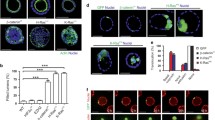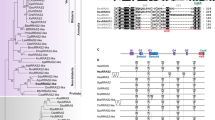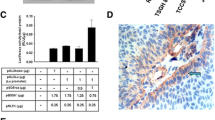Abstract
Objective: To investigate the mechanism of carcinogenesis, invasion and metastasis. Methods: The expressions of adhesive molecule and adhesive structure in v-k-ras transformed normal rat kidney cells (KNRK) were detected with a variety of molecular biological techniques, including cell culture, immunofluorescence labeling, electron microscopy, polyacrylamide gel electrophoresis, and protein blotting, and compared with normal rat kidney (NRK) cells. Results: The significantly shortened doubling time, remarkably active proliferation ability in soft agar, and invasive growth in the abdomen of nude rat, demonstrated the malignant biological behaviors of KNRK cells. In KNRK cells, the adhesive molecules, P-cadherin, α and β catenin, actin, and adhesive structures, the adhesive junction and gap junction, were all abnormally expressed. And cell aggregation was significantly decreased. The aggregation ability disappeared at 20°C, and became active with a suitable amount of calcium solution. Conclusion: Following the transfection of virus K-ras gene, normal cells were transformed into malignant cells. In early stage of cancer, the variation of adhesive ability may be one of the vital factors underlying tumorigenesis, invasion and metastasis.
Similar content being viewed by others
References
Stein WD. Analysis of cancer incidence data on he basis of multistage and clonal growth models [J]. Cancer Res 1991; 56:161–213.
Lijinsky W. Non-genotoxic environmental carcinogens [J]. J Environ Sci Health Part C Environ Carcinog Rev 1990; 8:45–87.
Zhang HJ, Yan T, Oberley TD, et al. Comparison of effects of two polymorphic variants of manganese superoxide dismutase on human breast MCF-7 cancer cell phenotype [J]. Cancer Res 1999; 59:6276–83.
Ishikawa H, Bischoff R, Holtzer H. Formation of arrowhead complexes with heavy meromyosin in a variety of cell types [J]. J Cell Biol 1969; 43:312–28.
Tsukamoto Y, Taira E, Kajimura K, et al. Involvement of gicerin, a cell adhesion molecule, indevelopment and regeneration of oviduct and metastasis of oviductal adenocarcinomas of the chicken [J]. Exp Cell Res 1999; 247:329–38.
Enomoto T, Yamasaki H. Phorbol ester-mediated inhibition of intercellular communication in BALB/c 3T3 cells: relationship to enhancement of cell transformation [J]. Cancer Res 1985; 45:2681–8.
Van de Wetering M, Barker N, Harkes IC, et al. Mutant E-cadherin breast cancer cells do not display constitutive Wnt signaling [J]. Cancer Res 2001; 61:278–84.
Calvisi DF, Factor VM, Loi R, et al. Activation of beta-catenin during hepatocarcinogenesis in transgenic mouse models: relationship to phenotype and tumor grade [J]. Cancer Res 2001; 61:2085–91.
Molenaar M, van de Wetering M, Oosterwegel M, et al. XTcf-3 transcription factor mediate beta-catenin-induced axis for mation in xenopus embryos [J]. Cell 1996; 86:391–9.
Otey CA, Vasquez GB, Burridge K, et al. Mapping of the alpha-actining binding site within the beta 1 integrin cytoplasmic domin [J]. J Biol Chem 1993; 268:21193–7.
Jammey PA, Chaponnier C. Medical aspects of the actin cytoskeleton [J]. Curr Opin Cell Biol 1995; 7:111–7.
Holder JW, Elmore E, Barrett JC. Gap junction function and cancer [J]. Cancer Res 1993; 53:3475–85.
Mehta PP, Bertram JS, Loewenstein WR. Growth inhibition of transformed cells correlates with their junction communication with normal cells [J]. Cell 1986; 44:187–96.
Takeichi M. Functional correlation between cell adhesive properties and some cell surface proteins [J]. J Cell Biol 1977; 75:464–74.
Author information
Authors and Affiliations
Corresponding author
Additional information
Foundation item: This work was supported by the National Natural Sciences Foundation of China (No. 30371624).
Biography: ZHANG Qi-gang (1963–), male, doctor of medicine, associate professor, The First Affiliated Hospital of China Medical University, majors in thoracic surgery.
Rights and permissions
About this article
Cite this article
Zhang, Qg., Liu, Hx., Tan, S. et al. Variation of adhesion capability of K-ras transformed malignant cells and clinical implications. Chin. J. Cancer Res. 17, 171–176 (2005). https://doi.org/10.1007/s11670-005-0035-0
Received:
Accepted:
Issue Date:
DOI: https://doi.org/10.1007/s11670-005-0035-0




